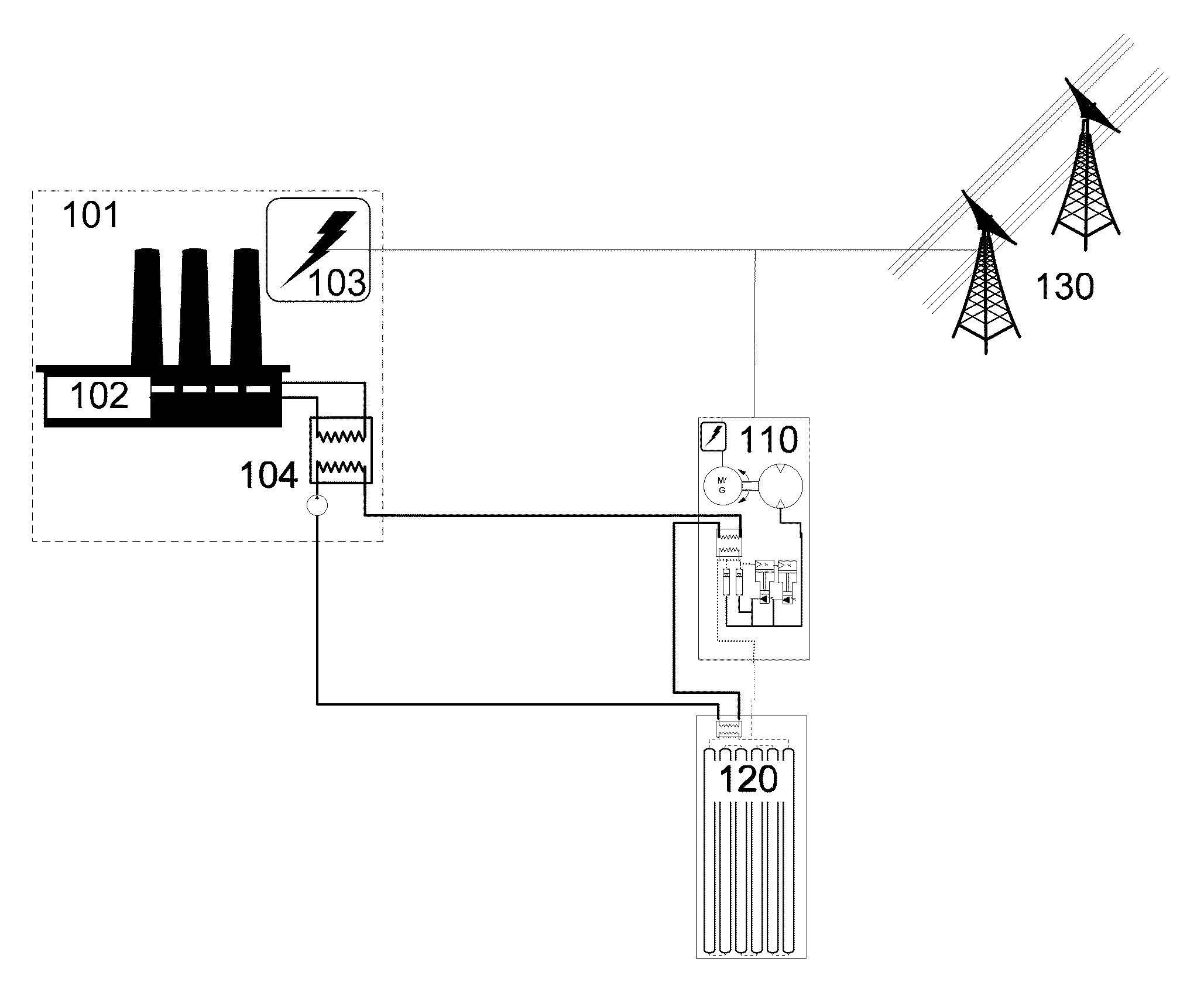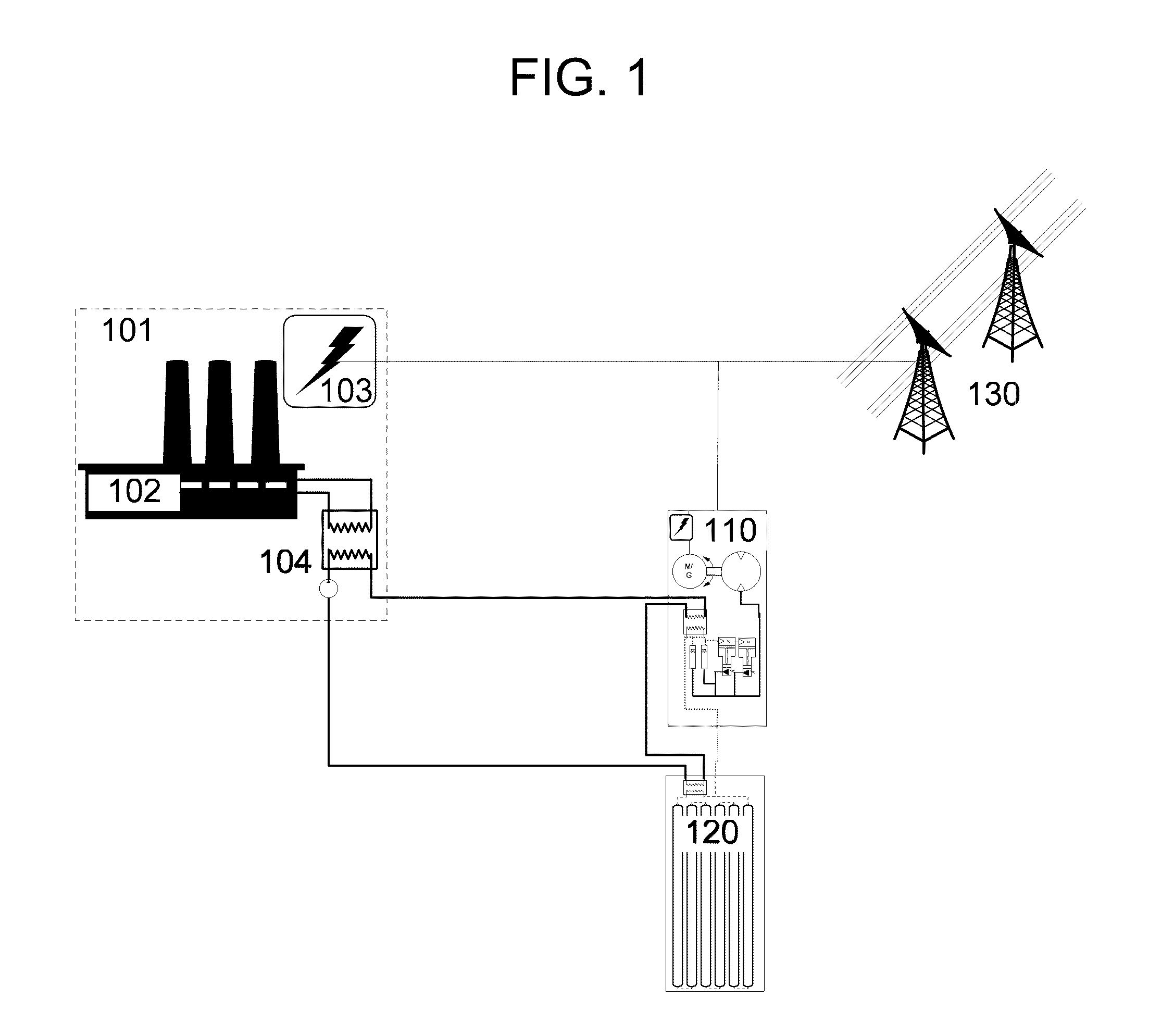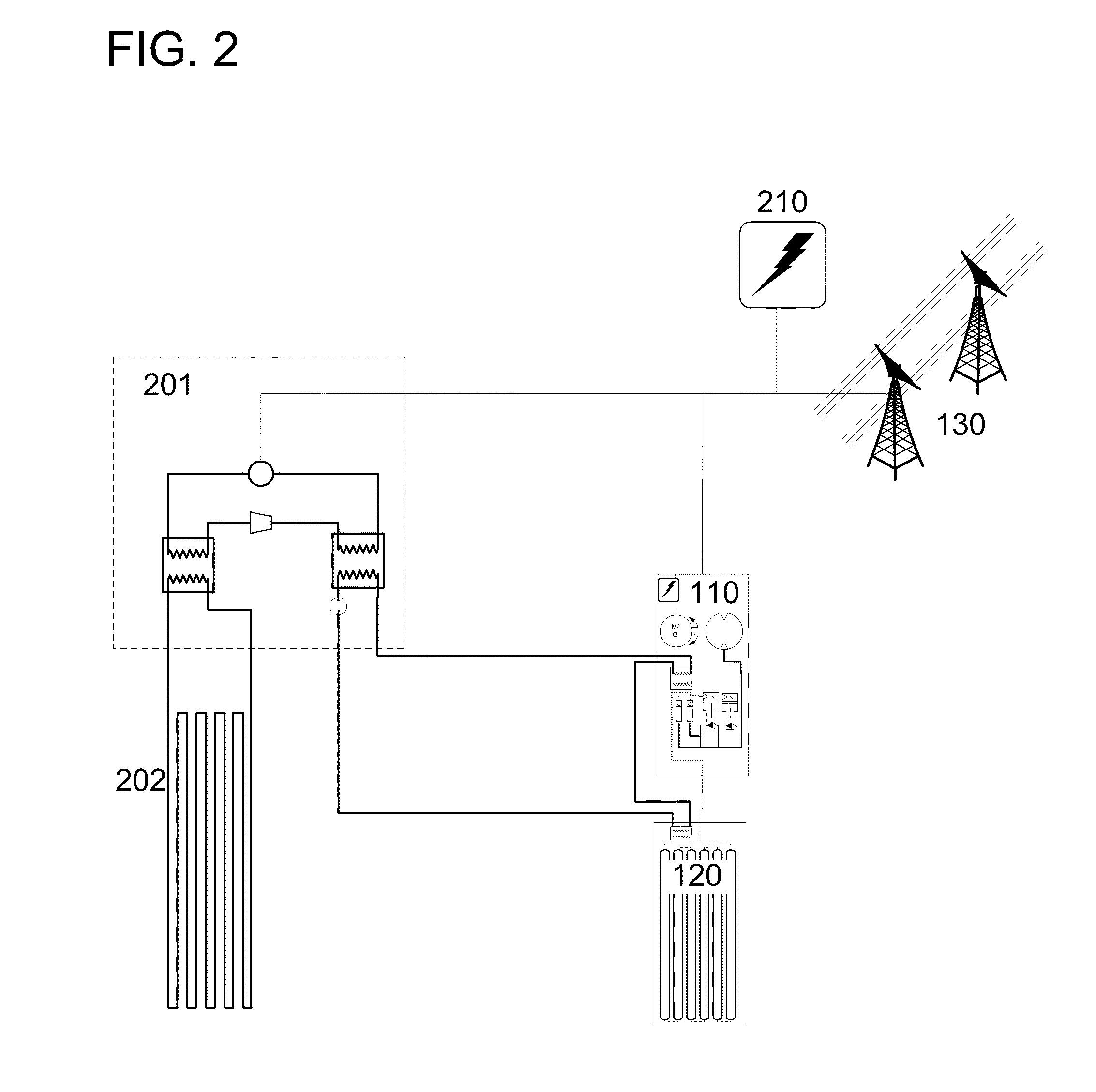Systems and Methods for Combined Thermal and Compressed Gas Energy Conversion Systems
a technology of energy conversion system and compressed gas, which is applied in the direction of machines/engines, transportation and packaging, mechanical equipment, etc., can solve the problems of inadvertent brownouts and blackouts, burnt expensive fuels, natural gas, etc., and achieve cost-effective and efficient energy storage. , the effect of increasing the power density and efficiency
- Summary
- Abstract
- Description
- Claims
- Application Information
AI Technical Summary
Benefits of technology
Problems solved by technology
Method used
Image
Examples
Embodiment Construction
[0041]In the following, various embodiments of the present invention are generally described with reference to a single hydraulic cylinder (for example, an accumulator or an intensifier) and simplified valve arrangements. It is, however, to be understood that embodiments of the present invention may include any number and combination of accumulators, intensifiers, and valve arrangements. In addition, any dimensional values given are exemplary only, as the systems according to the invention are scalable and customizable to suit a particular application. Furthermore, the terms pneumatic, gas, and air are used interchangeably and the terms hydraulic and fluid are also used interchangeably.
[0042]The temperature of the compressed air stored in the system can be related to its pressure and volume through the ideal gas law and thus to the power output of the system during expansion. Therefore, pre-heating (before or during expansion) or pre-cooling (during compression) of the compressed ga...
PUM
 Login to View More
Login to View More Abstract
Description
Claims
Application Information
 Login to View More
Login to View More - R&D
- Intellectual Property
- Life Sciences
- Materials
- Tech Scout
- Unparalleled Data Quality
- Higher Quality Content
- 60% Fewer Hallucinations
Browse by: Latest US Patents, China's latest patents, Technical Efficacy Thesaurus, Application Domain, Technology Topic, Popular Technical Reports.
© 2025 PatSnap. All rights reserved.Legal|Privacy policy|Modern Slavery Act Transparency Statement|Sitemap|About US| Contact US: help@patsnap.com



